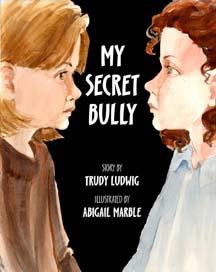Today is DAY ONE of anti-bully education week at Evergreen Christian School.
I have been looking forward to this week and to learn about the difference we can ALL make to be courageous in preventing and stopping bullying.
Chrissy Najarro, our school's chaplain, has organized a week of educating and is inspiring students to have COURAGE IN ACTION AT ECS.
Students are taking a stand against bullying and proudly wearing their green bracelets.
While talking with students in the classrooms, Chrissy Najarro said, “The students are honest about their experiences with bullies and ready to take a stand against them.”
What I have found interesting is, while I feel that most people have heard of the word "BULLY", there are many misunderstandings about it.
I started out my day taking a "Quick Quiz" from the anti-bullying ministry, "The Protectors."
The quiz asked some of the most common questions about bullying.....I have to admit, I got more than a few wrong!!
1. Bullying is just something kids do at a young age. They outgrow it and it doesn't influence the quality of their lives later in life. FALSE
2. The results of bullying upon the Target are short lived. Targets go on to live normal lives. FALSE
3. Bullying hits its peak in high school. FALSE
4. Bullies suffer from low self-esteem, are insecure and have few if any friends. FALSE
5. Bullies have anger management problems and can't help themselves from lashing out at whomever is near them at the time. FALSE
6. Bullies usually attack when no one is watching. FALSE
7. Most bullying is verbal, not physical, in nature. TRUE
8. Boys tend to be involved in physical bullying as girls tend to be involved in isolating and rejecting other girls--or what is called relational aggression. TRUE
9. The most bullied group of children in school are physically and mentally challenged children. TRUE
10. An effective way to get a Target to befriend a Bully is to help the Target tell the Bully how he or she feels, and to get the two to shake hands. FALSE
11. Studies show that more than half of middle school students bully. FALSE
___________________________________________________
Other interesting facts about bullying:
-In the “Theatre” of bullying there are 4 characters
1. The Bully
2. The Bystanders
3. The Target
4. The Authority
Where do YOU fit in? Where can you be courageous?
_________________________________
-Bully definition: the use of greater power with the intent to harm a person of lesser power for a period of time.
-85% of bullying takes place in front of other kids.
Bullies often like to attack in front of others.
-Less than 13% of kids intervene on behalf of the Target.
-Up to 80% of bystanders actually cheer on the Bully.
-Every school shooter has been male except for one.
-School shooters do not “snap’, they planned the Columbine attacks for years.
-Male athletes control the moral direction of a school.
-Bullying is not about anger or conflict, it’s about disdain and contempt for those the Bully thinks are less important than they are.
-The Target doesn’t usually do anything to deserve the bullying.
-A Bully picks on someone they know that they can dominate.
-Most of bullying (appx. 80%) is verbal, not physical.
-Bullies “shop” for kids who are isolated. If you see students alone a lot at lunch or at recess, encourage other students to be their friends.
-Tattletale: bullies came up with this term! Tattling is designed to get someone in trouble, reporting is designed to get someone out of trouble.
-6 out of 10 times the bullying will stop if just 1 person tells them to, the percentage goes up if more than one person tells them to stop.
___________________________________
I am ready to show courage in action at ECS! Who will join me???






